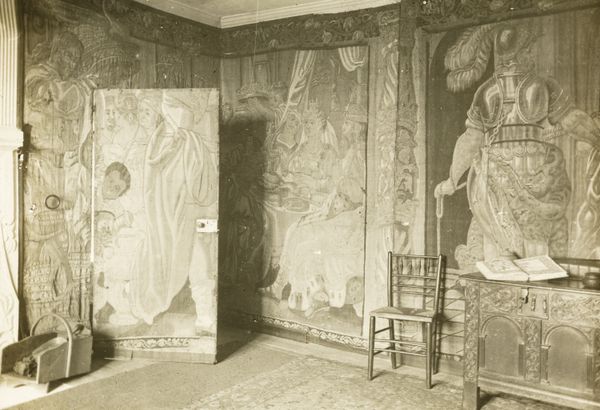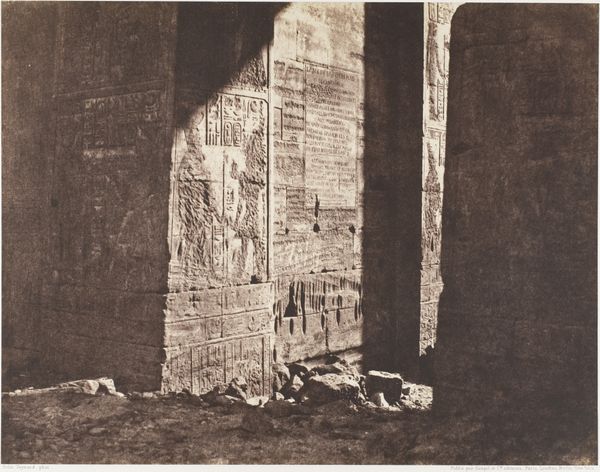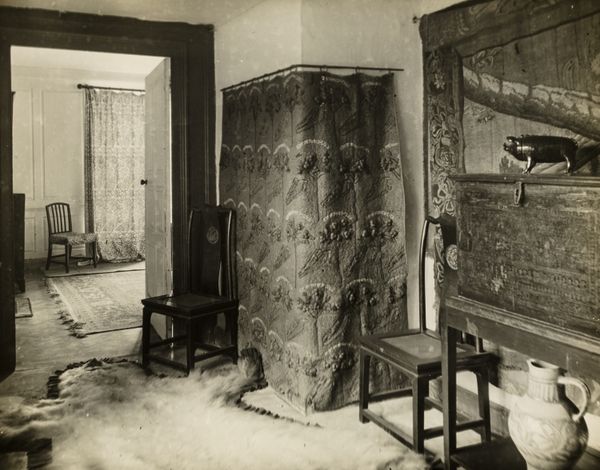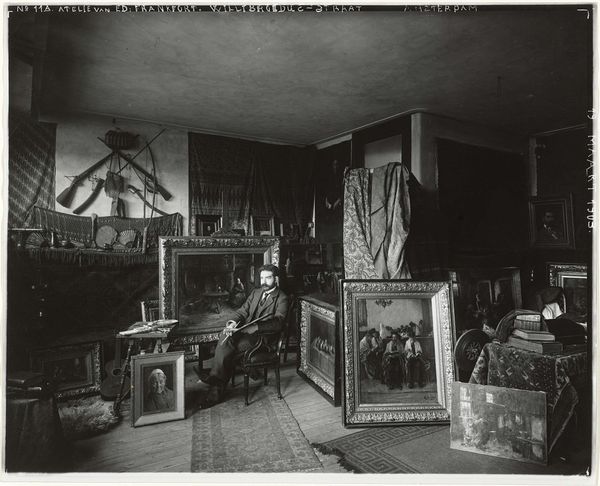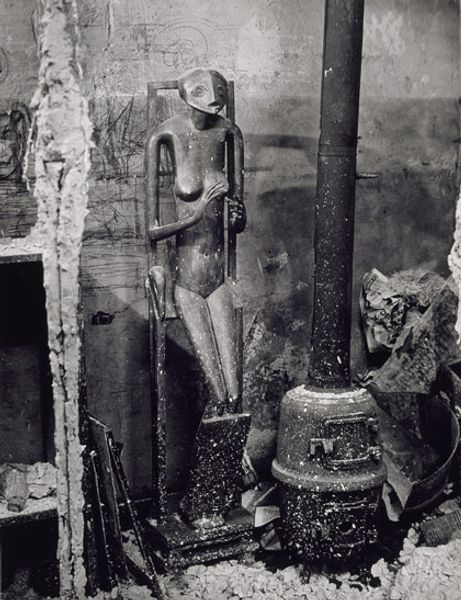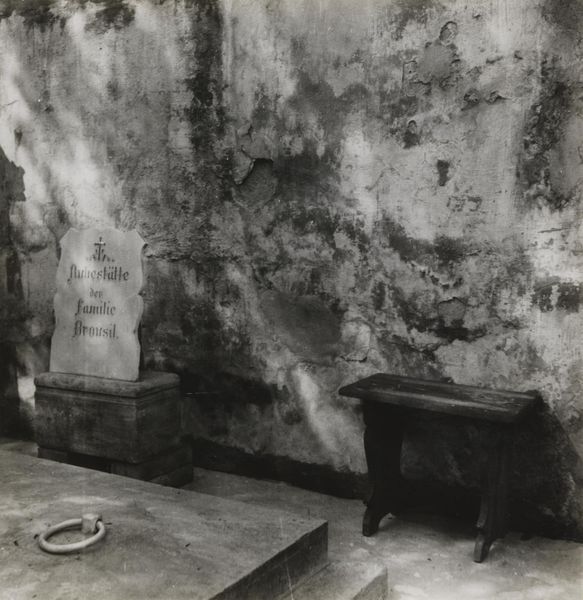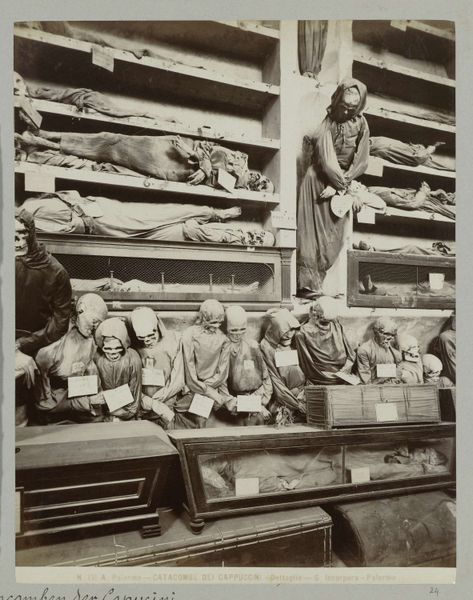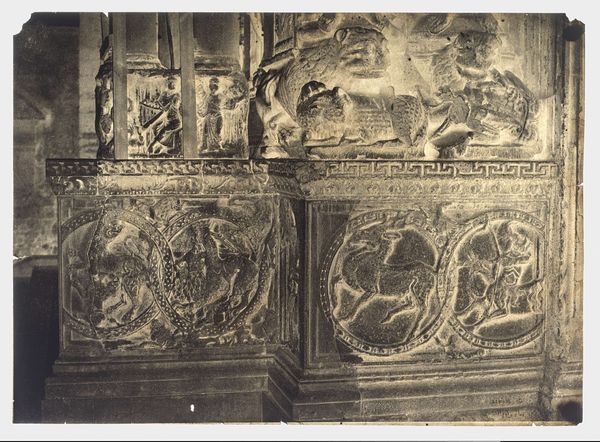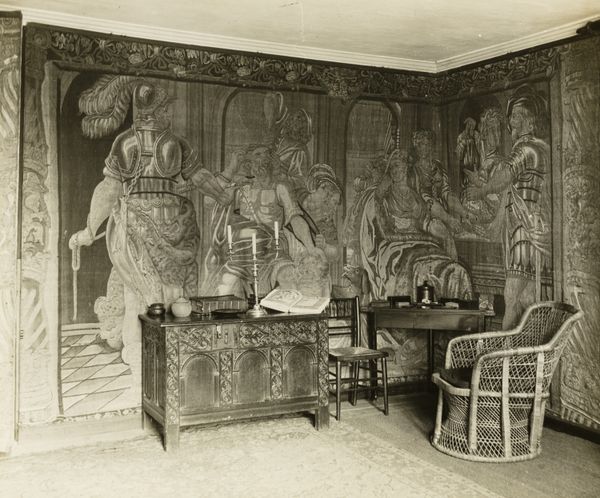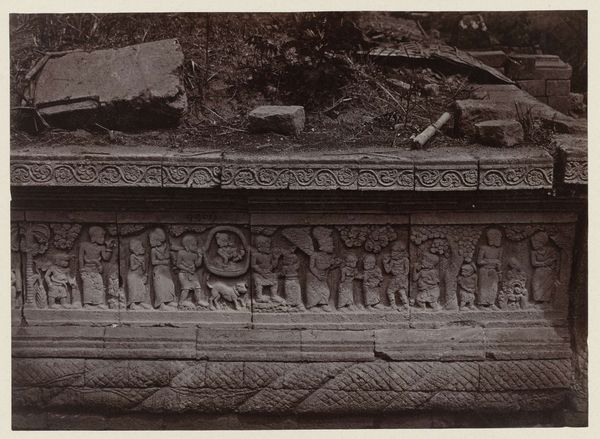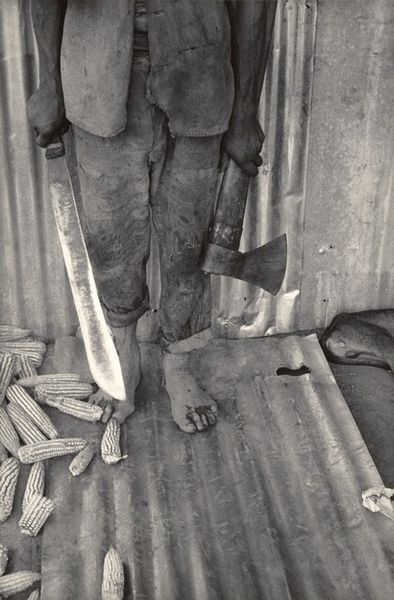
photography, gelatin-silver-print
#
sculpture
#
photography
#
black and white
#
gelatin-silver-print
#
monochrome photography
#
monochrome
#
monochrome
Dimensions: image: 19 × 28 cm (7 1/2 × 11 in.) sheet: 24.5 × 35 cm (9 5/8 × 13 3/4 in.)
Copyright: National Gallery of Art: CC0 1.0
Editor: This is Ed Grazda’s "Paucartambo, Peru" from 1974, a black and white photograph showing what appears to be a child's bedroom. The walls are decorated with naive drawings of animals, and there's a wooden carving of a person above the beds. The overall effect is dreamlike and intimate, but also a little melancholic. What do you see in this piece? Curator: I see a potent commentary on cultural hybridity and the intersection of indigenous traditions with external influences. Look closely at the juxtaposition of the folk-art carvings, those animals sketched on the wall and the figures seemingly floating above the beds. Doesn’t this space reflect the lived experience of cultural negotiation, especially within marginalized communities? How does it strike you? Editor: I see your point. The elephant drawing feels particularly out of place, as if it doesn't belong here, which could symbolize external forces impacting this community. But is it necessarily melancholic or negative? Couldn't it represent adaptation and creativity? Curator: Precisely. It is neither purely celebratory nor purely lamenting. Instead, it highlights the complexities and ambiguities inherent in cultural exchange and the imposition of outside influence. The photograph also brings up issues of representation – who has the power to document whose story? Are we, as viewers, implicated in the colonial gaze? Editor: That’s a very insightful point, especially considering the historical context of Peru and the legacy of colonialism. So the image invites us to think critically about power, representation, and cultural identity. I appreciate you pointing that out. Curator: Indeed. It’s a conversation starter, encouraging us to question not only what we see, but *how* and *why* we see it. What I take from this is an enhanced ability to identify bias and a commitment to engage more deeply and sensitively with the complex social context.
Comments
No comments
Be the first to comment and join the conversation on the ultimate creative platform.

